Teaching the Method: Roberta Cooks

Esther Gokhale, 1996
A Deep Pool of Knowledge
We have an amazing pool of teachers, and I’m extremely proud of every one of them. They have diverse backgrounds and bring all kinds of knowledge, experience, and sensitivity to the Gokhale Method, which benefits teachers and students alike. We are constantly tweaking and improving our offerings. Every month we get together via regularly scheduled continuing-education teleseminars, where I or another expert in a specific area makes a presentation, followed by a lively discussion. In addition, we stay in regular communication via what we have dubbed the “Teacher Water Cooler.” This is a private collaboration, a place where one teacher might write, “I just reviewed the intake form for ‘Student Y,’ who has this unusual syndrome, plus this and this and this. Any ideas how I might adjust my approach?” Another teacher might offer, “I ran into a cool educational tool the other day,” or, “Check out this interesting video on YouTube, and tell me what you think about its point of view.” So we teachers benefit from an ongoing and very dynamic interaction and, once a year, we gather together for a weekend of hands-on work.
A Gokhale Method teacher who played a very helpful role in the early days of our organization, when we most needed help, is Roberta Cooks, MD. She helped create a support group for teachers, as well as a teacher peer-review form that established standards to measure and improve teacher skills. She also tackled various writing and editorial projects, contributing to the ever-evolving teacher training manual, which is now huge, because it covers all aspects of the training in great detail.
A physician who trained as a psychiatrist, Roberta spent much of her medical career in the museum industry, creating health-related exhibitions. Currently she is one of our most active teachers, regularly offering Gokhale Method Foundations courses and one-on-one sessions in and around Philadelphia, where she lives, as well as in New York City; Boulder, Colorado; and in Boca Raton and Fort Lauderdale, South Florida.
Recently, I checked in with Roberta. Here’s some of what she had to share….
Roberta Cooks and Gokhale Method–the early days

Roberta Cooks, Gokhale Method teacher
"Esther was teaching and fine-tuning the Gokhale Method on her own for a long time. Somewhere around 2008, she knew it was important to have more people learning and teaching the Method, and she began to bring on teachers, a few of us at a time. I was one of the first, one of a group of seven or eight. Some of us stayed at Esther’s house, where we worked late into the night, doing our homework and brainstorming ways to boost our own training. Another teacher, Kathleen Marie, and I were especially interested in pursuing this, and—under Esther’s tutelage—we took next steps. Esther had begun to develop a teacher training manual and we built on this with the goal of standardizing excellence. Esther was chock full of ideas and we were happy to be able to execute some of them.
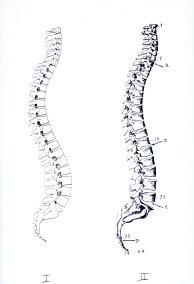
Illustrations of the human
spine from anatomy books
published in I) 1990 and II) 1911
As a physician, what particularly struck me when I first read Esther’s 8 Steps to a Pain-Free Back was the side-by-side comparison of the spine—the anatomical drawing from a 1911 anatomy book contrasted with a 1990 illustration.
Seeing these images, both from American anatomy books, prompted the thought: ‘This is the ‘black hole.’ No one knows what to do about the huge problem of back pain, so why aren’t we looking back into our own medical textbooks and reflecting on the early photographic record? Why aren’t we acknowledging this pertinent information? And I felt I needed to convince other physicians of the common-sense truth of this core element of the Gokhale Method, which of course is only one piece of the evidence that supports Esther’s work.
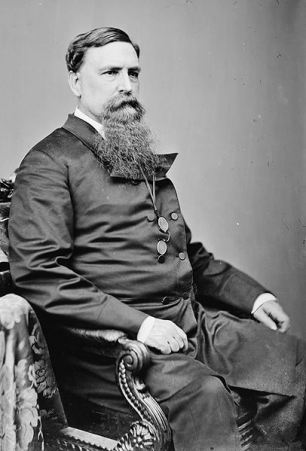
The healthy stacksitting posture modeled
by this Maryland Governor and
Congressman is typical of our
19th-century forebears
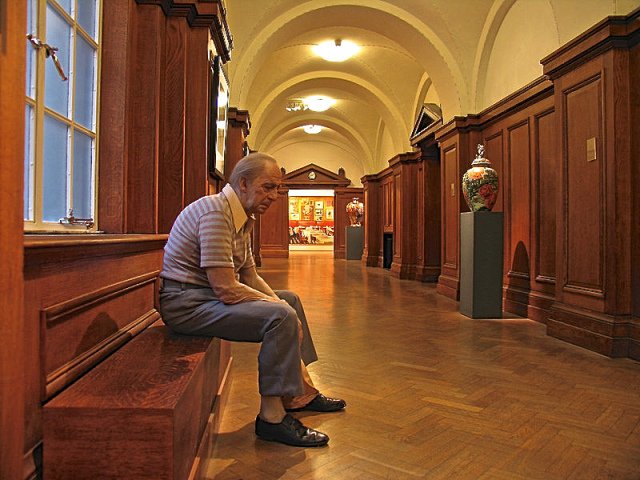
Museumgoers have been known
to try to console sculptor Duane
Hanson’s 1977 ‘Man on A
Bench,’ his slouching vinyl and
polychromed body is so hyper-real
The dance connection

Tango is a “glidewalking” dance
I dance Tango. In fact, it’s through dance that I first found Esther. My Tango teacher was handing out copies of Esther’s 8 Steps to a Pain-Free Back to anyone in the class who had back pain. Pain wasn’t an issue for me, but at the time my sister was experiencing problems with her shoulders, her hip, and her feet. Nothing she was doing was working, so I read Esther’s book and was sufficiently intrigued to seek Esther out. I took a Gokhale Method Foundations course with Esther and was very impressed by her work and teaching style. I saw how her Method helped students with a variety of health issues and backgrounds. At the end of the course I spoke with Esther and we really hit it off. So I decided to become a Gokhale teacher by going through the teacher training course.
Argentine Tango is a walking dance that has a lot in common with the glidewalking we do in the Gokhale Method. Just as practitioners of the glidewalking technique engage the gluteus medius muscles by sending the back heel into the floor to propel themselves forward, so dancers of the Argentine Tango take the same basic actions. Perhaps you can see in the video just below that in propelling myself forward with the heel of my back foot and my back leg and my engaged gluteus medius muscles, I’m communicating a strong message to my partner to move backwards. My shoulders are rolled back, my rib anchor is engaged, and my partner, who is following, receives most of my ‘information’ from my chest.
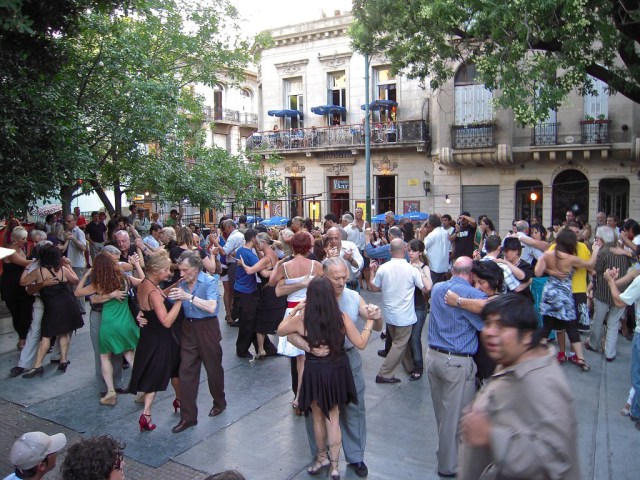
Argentine Tango, San Telmo Plaza Dorrego, Buenos Aires
My writing, medical, and museum background
In addition to Tango, I’ve always been interested in self-education and preventive medicine. And I’m a writer; I’ve written a children’s book. These interests, together with my psychiatric medical training and my background designing health-related museum exhibits, are relevant to teaching the Gokhale Method. What’s wonderful about the posture work is not only what we teach, but how we teach it! The Method is so clear and practical. And it’s multisensory, which is essential because we want what we teach to become part of peoples’ bodies. The multifaceted approach is very similar to what I do when designing medical exhibits, where the challenge is to take difficult-to-understand information and make it visual, aural, and very hands-on. People learn in different ways. That’s why the rich, multimedia training we offer is so effective. Not only is it common-sense practical and intellectually clear, it’s visual and tactile.

One of the projects I directed and developed was the Maryland Science Center’s
permanent and traveling exhibit ‘Cells: The Universe Inside Us’
I’ve been designing museum exhibits for a number of years—for example, the first big traveling exhibit on HIV/AIDS, as well as an exhibit on the brain, the heart, and—as shown in these photos–’the universe inside us’—the cells. What I’ve observed about health education in museums is that people come to theses places, which are much more neutral settings than a medical office or a hospital, absolutely hungry for information. This seemed particularly true with the brain and AIDS exhibits, and I think this is because many people feel frightened or intimidated by medical settings, which makes it difficult for them to process what they’re being told.
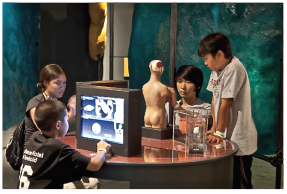
Hands-on, highly visual, and interactive
exhibits like the one shown here offer
a multisensory learning experience–this
is what the Gokhale Method
offers too
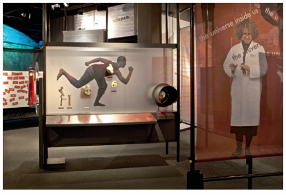
Healthy posture can positively
impact the universe inside us
The mind-body connection–wellbeing and healthy posture
I have seen some very positive psychological changes in people I’ve taught, and the improvement in the outlook of many of my posture students is one of the reasons that I find teaching the Gokhale Method to be so satisfying and joyful. Research has shown that there are biochemical advantages to being physically open, with shoulders rolled back and chest open–as opposed to standing with arms crossed and shoulders hunched–and my own experience confirms that posture can be a complementary wellness approach to psychological conditions. And what surprised me initially–and what I still find delightful, today–is how quickly these positive effects so often happen!
It’s not unusual when I’m teaching the Foundations course for one student to say to another as early as the second day, ‘You look like a completely different person.’ In a class I just taught in Florida, a massage-therapist student who had participated in the free class and returned to the Foundations course, told me: ‘After I learned the shoulder roll and then worked with my clients, I felt so much more open to the world.’
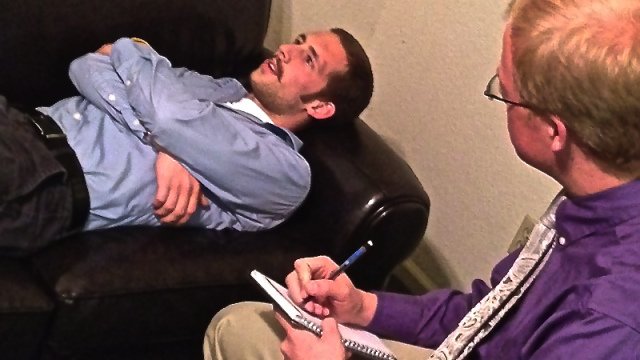
Might stretchlying, with shoulders rolled back and chest open,
alter this fellow’s sense of wellbeing?
Again, even though I’m not working directly on the psychological state of my posture students, I see positive results that are in the psychological realm. People with healthy posture tend to have a more positive body image. Practicing healthy posture, which requires us to be present in the moment, can also be an effective way of quieting the mind.
Yet another thing I know from my teaching of the Gokhale Method, as well as from my own experience as an individual with rheumatoid arthritis, is that by having a better understanding of my body and by knowing how to protect my muscles, joints, and skeletal system to prevent pain–all these things give me actual greater control over my health. This is such a rich topic, because I also know, both professionally and personally, that feelings of helplessness–a loss of control over one’s life–represent one of life’s biggest stressors!
Small groups
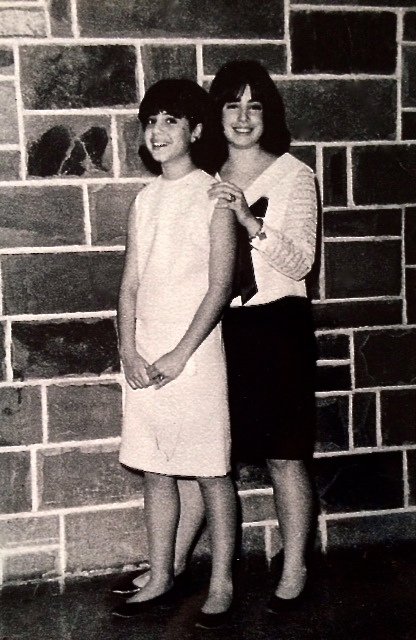
My sister was my first student! Here, while we were
pre-teens, it looks like I was already encouraging her to
roll back her shoulders.
Another strength of the Gokhale Method is that classes are taught in small groups, which to my way of thinking is a wonderful way to teach people, many of whom are not comfortable with their bodies, or are feeling frightened or are in pain. Not only does the small-group approach enable teachers to do hands-on work with each individual, it encourages students to learn from one another, and to form a kind of community. The Method is a practical, step-by-step educational model, not a medical model, and in a small group this becomes a very powerful way to learn.
The rewards of teaching the Gokhale Method
When, as a prospective teacher, I signed on for Gokhale Method teacher training, I first needed to take the Foundations course, and then I needed to find someone willing to work with me. I chose my cooperative sister! At the time, she was having difficulties with hip, shoulder and foot pain. She had been going to health professionals for several years with no relief. ‘I was at my wit’s end,' she said, when we just lately reminisced about this. ‘It was so amazing to me that, after years of getting no relief through the usual channels, learning this method from you–my sister–could make such a positive difference.’ With most of her hip, shoulder, and foot problems resolved over the course of my teacher training, she was able to go back to biweekly Jazzercise classes that she still enjoys today. After working with my sister, I taught two people at once, then four people, then six–until I graduated my way up to teaching eight-person classes.
A teacher-centric organization
While the fundamentals of teaching the Gokhale Method have remained essentially the same, Esther has ensured that teachers’ skills, energy, and time are leveraged by technology, and that the company stays cutting-edge. For example, teachers now use an iPhone app that makes it possible for us to take before-and-after pictures of each student and upload them in real-time to the private, secure portion of the Gokhale Method website dedicated to that student. Uploading these images with a click (during class) triggers an email to the student, so that as they leave class, an email alert is waiting in their inbox.
Instant access to these before-and-after photos is a powerful tool for students, in part because so many enter the classes wondering, ‘How am I ever going to change in such short period of time?’ With the before-and-after photos, they can see what a difference the training has made, even if they’ve taken an intensive course over a single weekend. The before-and-after photos also remain a valuable tool for students long after they have completed the coursework.
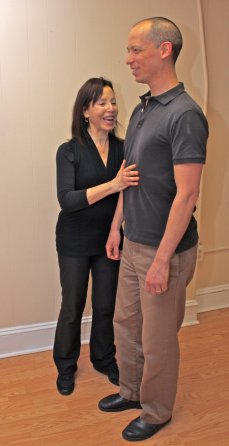
Here, I help a Gokhale Method
student anchor his ribs
Also hugely helpful is the student intake form. When students sign up online or call the Palo Alto office, they complete a form that provides teachers with need-to-know information. This creates a link between individual students and teachers prior to their meeting. Gokhale Method teachers have access to only their students’ intake form, although, via the Teachers’ Water Cooler, we can reach out to our colleagues for additional expert input on unusual or particular cases while leaving the student anonymous.
An advantage to both students and teachers is the ease with which student histories are privately, securely, and instantly shared via the Method’s electronic educational records. This allows for uniformity across Gokhale Method training and continuity for students. Just now, for example, I taught a student in Florida who had been taught by my fellow-teacher Kathleen, which meant that prior to my meeting with her I could access private information about her case and be prepared.
In these ways–and more–technology makes us stronger. We have the support of the entire teacher community, including Esther. And of course there are advantages to teaching–and learning–in a franchise where there is uniformity of high standards.
To sum up, I love being a teacher of the Gokhale Method, because it gives me back so much. To help people get to the root of their pain and posture problems, without imposing risks—to make such a difference in peoples’ lives by putting the practical power to heal into their own hands and teaching them to problem-solve significant challenges in their lives—well, it’s just incredibly rewarding.
If you are interested in learning more about what’s involved in teacher training, please check in with us at [email protected]. The Gokhale Method Institute is not able to satisfy student demand in a number of places in the US, Canada, and abroad and would love to have more qualified teachers join us."

Teaching the Gokhale Method is incredibly rewarding–it gives so much back.
Join us in an upcoming Free Workshop (online or in person).
Find a Foundations Course in your area to get the full training on the Gokhale Method!
We also offer in person or online Initial Consultations with any of our qualified Gokhale Method teachers.

Comments
Hi. Reading this, plus what I
Hi. Reading this, plus what I aready know of your program,makes me want to check-out your teacher training. I already teach yoga and somatics... how does this fit in? Posture seems like a nice baseline and foundatioal practice.
Thanks.
Donna
ugh! Please forgive the typo
ugh! Please forgive the typo's and misspelling above. I meant to preview and correct.
I'm not familiar with the process.
Thanks.
Roberta, I'm intrigued by the
Roberta, I'm intrigued by the images of the spines too. Have you been successful bringing this to other physicians? How has that been going? What do they think and say about the images and Esthers's suggestion of what a healthy spine and back look like? Any interesting points or counter points to this argument?
"Seeing these images, both from American anatomy books, prompted the thought: ‘This is the ‘black hole.’ No one knows what to do about the huge problem of back pain, so why aren’t we looking back into our own medical textbooks and reflecting on the early photographic record? Why aren’t we acknowledging this pertinent information? And I felt I needed to convince other physicians of the common-sense truth of this core element of the Gokhale Method, which of course is only one piece of the evidence that supports Esther’s work.
Hi Donna,It's great to hear
Hi Donna,
It's great to hear of your interest in Primal Posture and The Gokhale Method. The Gokhale Method is a wonderful foundation for the teaching of Yoga and other body arts. Many of our Gokhale teachers have a background similar to yours and have found that the Gokhale Method is amazingly enriching to their practices. I have also taught many yoga, massage and pilates teachers in my GMF courses and they often write afterwards that they are incorporating Gokhale techniques into their work with very positive results. I have done some introductory workshops with physicians and have also taught physicians with different specialities in my courses. The ones who come to a workshop or a course are very receptive to what the Gokhale Method has to teach. No physician has ever questioned the evidence -both medical illustrations and photos- that I present in the workshops and courses. Radiologists seem particularly tuned in to the significance of those two contrasting illustrations of spines from 1911 and 1990. I do however, still find it a bit difficult to get a forum with physicians to present the Gokhale Method. They are often so busy and, if they don't know anything of the method, are skeptical of putting time into learning more about it. In that way, I have my work cut out for me.
Best regards,
Roberta
I took the week-end
I took the week-end course with Roberta in Denver.
Since taking the course I have not had any back issues. The hip hingeing and stretchsitting are allowing me to be more active.
Roberta is an inspiring teacher.
Susan Richards
Add New Comment
Login to add commment
Login